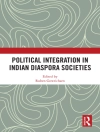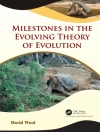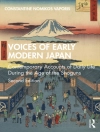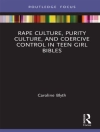A powerful and innovative argument that explores the complexity of
the human relationship with material things, demonstrating how
humans and societies are entrapped into the maintenance and
sustaining of material worlds
* Argues that the interrelationship of humans and things is a
defining characteristic of human history and culture
* Offers a nuanced argument that values the physical processes of
things without succumbing to materialism
* Discusses historical and modern examples, using evolutionary
theory to show how long-standing entanglements are irreversible and
increase in scale and complexity over time
* Integrates aspects of a diverse array of contemporary theories
in archaeology and related natural and biological sciences
* Provides a critical review of many of the key contemporary
perspectives from materiality, material culture studies and
phenomenology to evolutionary theory, behavioral archaeology,
cognitive archaeology, human behavioral ecology, Actor Network
Theory and complexity theory
Mục lục
Epigraph ix
List of Figures x
Acknowledgments xii
1 Thinking About Things Differently 1
Approaches to Things 1
Themes About Things 3
Things are Not Isolated 3
Things are Not Inert 4
Things Endure over Different Temporalities 5
Things Often Appear as Non-things 5
The Forgetness of Things 6
What Is a Thing? 7
Humans and Things 9
Knowing Things 10
Conclusion: The Objectness of Things 13
2 Humans Depend on Things 15
Dependence: Some Introductory Concepts 17
Forms of Dependence 17
Reflective and Non-reflective Relationships with Things 18
Going Towards and Away From Things 21
Identification and Ownership 23
Approaches to the Human Dependence On Things 27
Being There with Things 27
Material Culture and Materiality 30
Cognition and the Extended Mind 34
Conclusion: Things R Us 38
3 Things Depend on Other Things 40
Forms of Connection between Things 42
Production and Reproduction 42
Exchange 43
Use 43
Consumption 43
Discard 43
Post-deposition 44
Affordances 48
From Affordance to Dependence 51
The French School – Operational Chains 52
Behavioral Chains 54
Conclusion 58
4 Things Depend on Humans 64
Things Fall Apart 68
Behavioral Archaeology and Material Behavior 70
Behavioral Ecology 74
Human Behavioral Ecology 80
The Temporalities of Things 84
Conclusion: The Unruliness of Things 85
5 Entanglement 88
Other Approaches 89
Latour and Actor Network Theory 91
The Archaeology of Entanglement 94
The Physical Processes of Things 95
Temporalities 98
Forgetness 101
The Tautness of Entanglements 103
Types and Degrees of Entanglement 105
Cores and Peripheries of Entanglements 108
Contingency 109
Conclusion 111
6 Fittingness 113
Nested Fittingness 114
Return to Affordance 115
Coherence: Abstraction, Metaphor, Mimesis and Resonance 119
Abstraction, Metaphor and Mimesis 120
Synaesthesia 124
Resonance 125
Coherence and Resonance at Çatalhöyük 132
Conclusion 135
7 The Evolution and Persistence of Things 138
Evolutionary Approaches 139
Evolutionary Ecology (HBE) 141
Evolutionary Archaeology 142
Dual Inheritance Theory 144
Evolution and Entanglement 147
Niche Construction 149
Evolution at Çatalhöyük 151
Conclusion 156
8 Things happen … 158
The Complexity of Entanglements 159
Open, Complex and Discontinuous Entanglements 159
Unruly Things: Contingency 159
Conjunction of Temporalities 160
Catalysis: Small Things and the Emergence of Big Effects 163
Is there a Directionality to Entanglements? 167
Some Neolithic Examples 171
Macro-evolutionary Approaches 173
Why Do Entanglements Increase the Rate of Change? 174
Conclusion 177
9 Tracing the Threads 179
Tanglegrams 180
Locating Entanglements 185
Sequencing Entanglements – at Çatalhöyük 189
Sequencing Entanglements – the Origins of Agriculture in the Middle East 195
Causality and Directionality 200
Conclusion 204
10 Conclusions 206
The Object Nature of Things 207
Too Much Stuff? 210
Temporality and Structure 212
Power and Agency 213
To and from Formulaic Reduction 216
Things Again 218
Some Ethical Considerations 220
The Last Thing on my Mind 221
Bibliography 223
Index 245
Giới thiệu về tác giả
Ian Hodder is Dunlevie Family Professor in the Department of
Anthropology at Stanford University. Previously he was Professor of
Archaeology at Cambridge. His main large-scale excavation projects
have been at Haddenham in the east of England and at
Çatalhöyük in Turkey. He has been awarded several
awards and honorary degrees. His books include The
Leopard’s Tale: Revealing the Mysteries of
Çatalhöyük, The Archaeological Process
(Blackwell), The Domestication of Europe (Blackwell),
Symbols in Action and Reading the Past.












